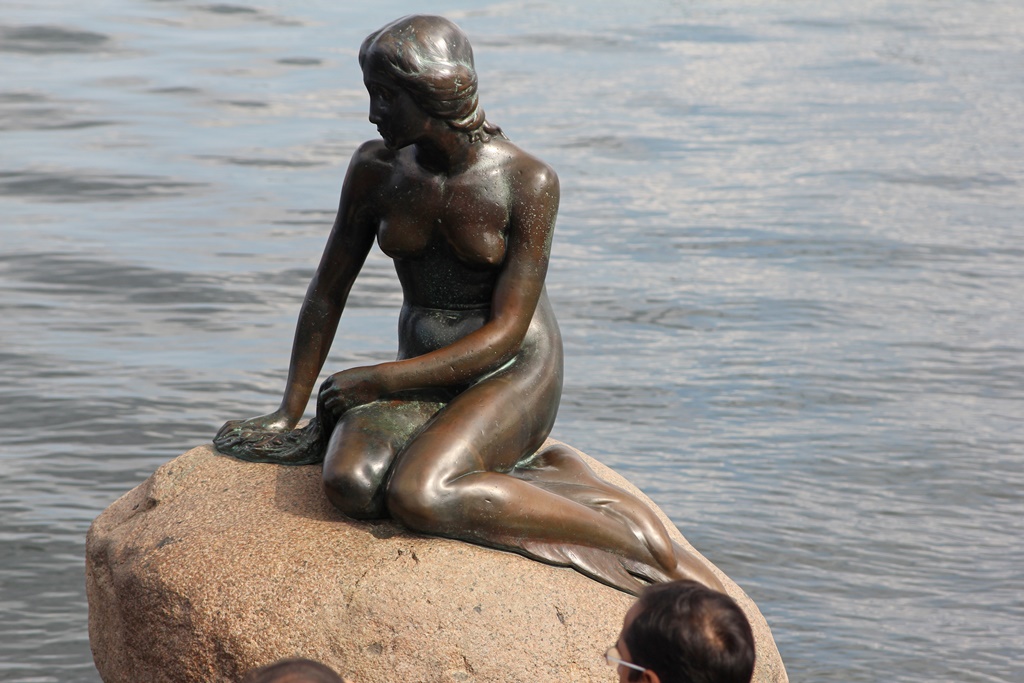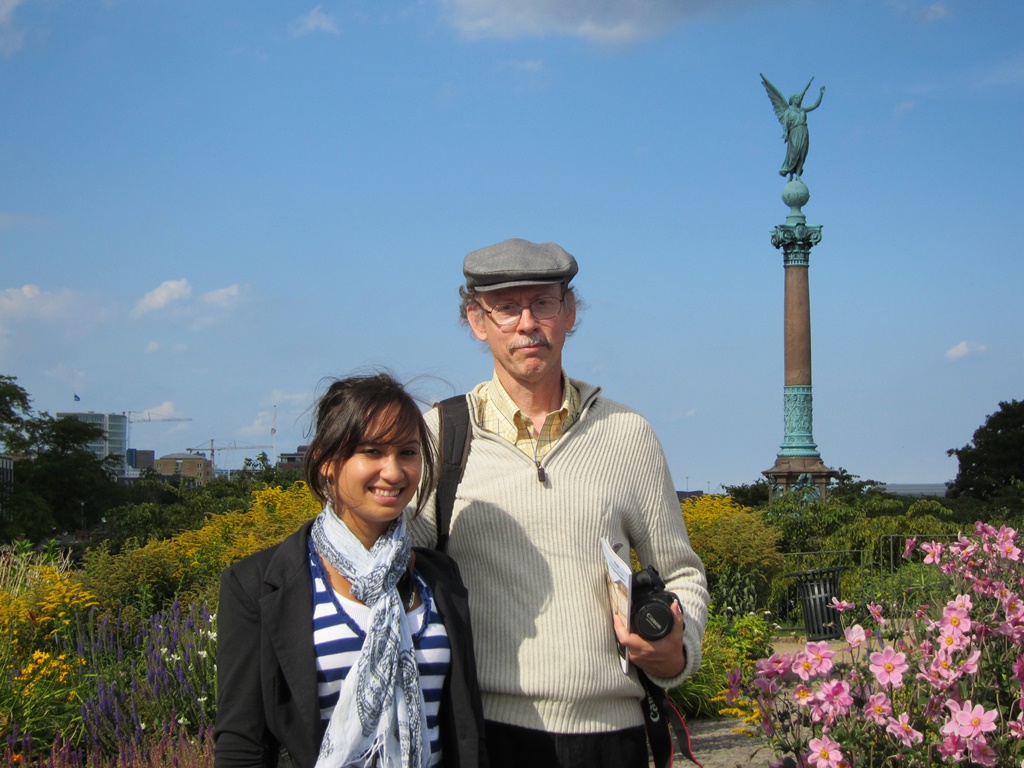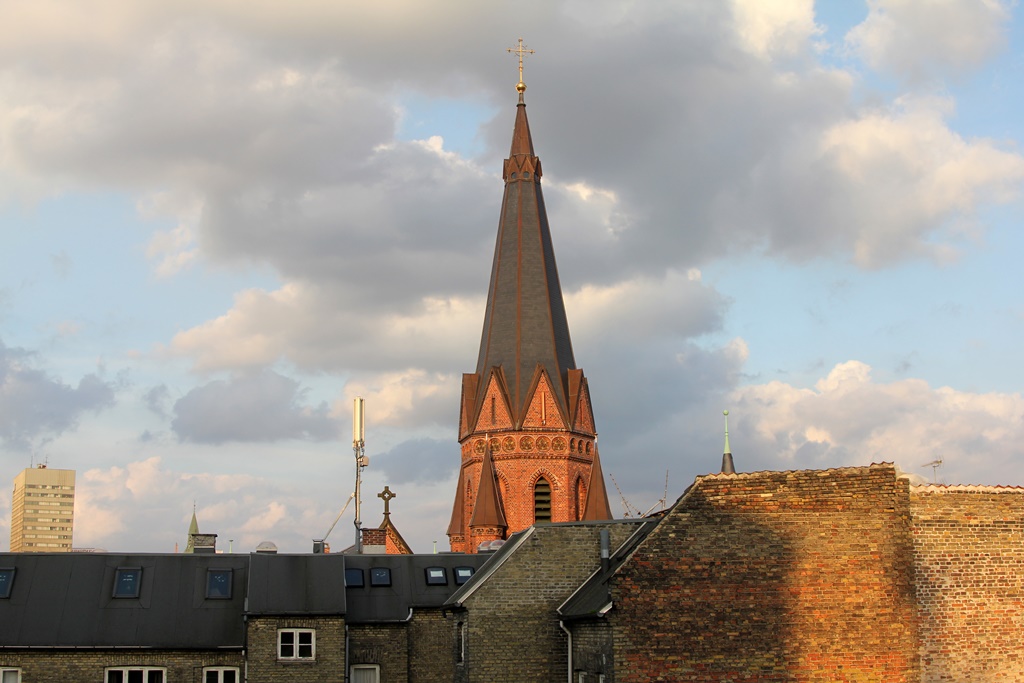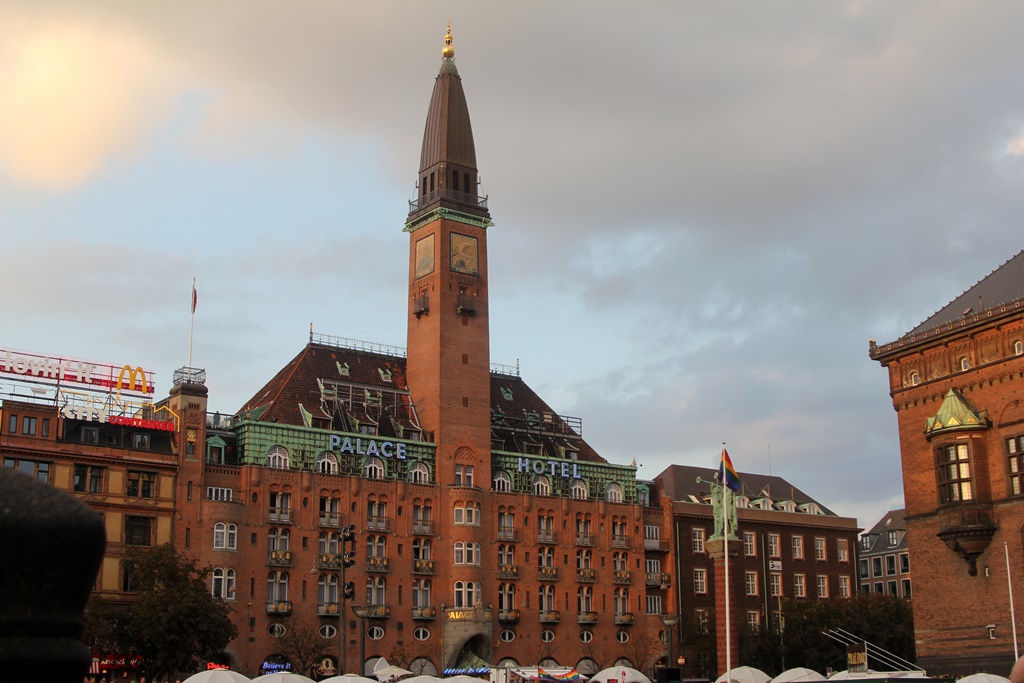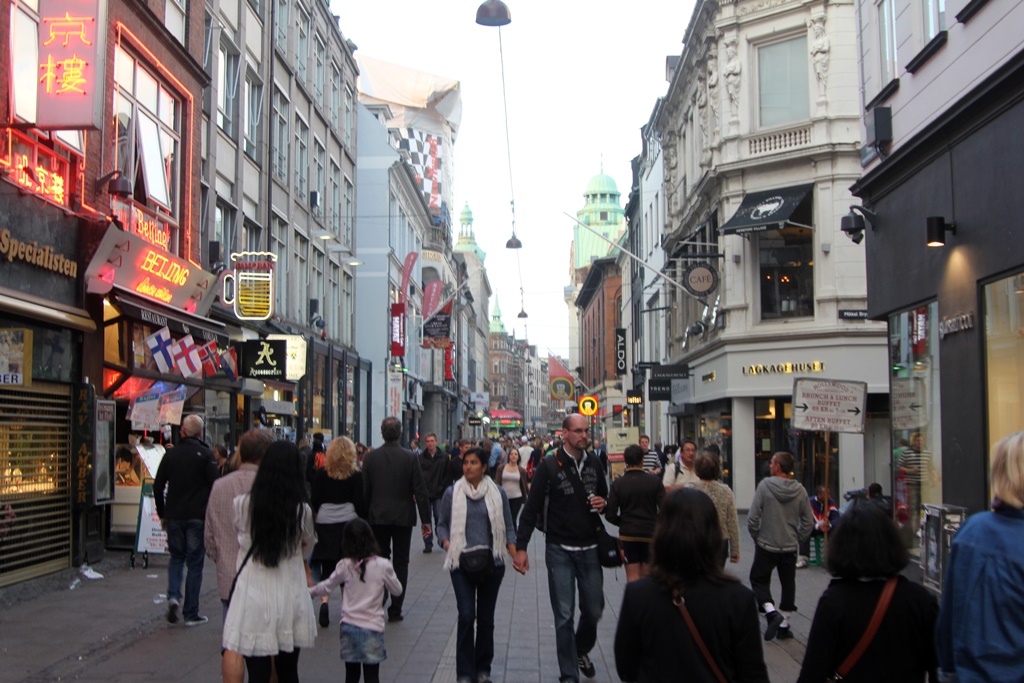The Little Mermaid, as everyone knows, is a 1989 Disney movie about a teenaged mermaid named Ariel with red hair and
a dynamite singing voice (underwater, no less!), who falls in love with an air-breathing human Prince. She’s transformed
into a human by an evil sea witch who says she has to get the Prince to fall in love with her within a certain amount of
time, or else she’ll be turned into some kind of wretched plant thing that gets rooted in the witch’s garden for eternity. But
the witch takes the mermaid’s voice away so she can’t win over the Prince with her golden vocal cords, or even communicate with
him very well. Hijinks ensue, and the mermaid can’t quite pull off the task of getting the Prince to kiss her in time (due
largely to the witch’s interference), but the Prince comes to his senses and saves the day, and everyone lives happily ever
after, except the bad guys, who all die horribly. The end.
The Little Mermaid
Possibly the best-known landmark of Copenhagen (and maybe of Denmark) is a statue of this very same mermaid, a bronze
that has perched atop a large rock at the edge of Copenhagen’s harbor since 1913. Those of you who can compare numbers
will have noted by now that 1913 < 1989, and may be suspiciously wondering how a sculpture can be created that’s based
on a movie that was released 76 years later. The answer, of course, is that it’s not based on the movie at all. It’s
based on a story created by Danish writer (and occasional creator of children’s stories) Hans Christian
Andersen, who wrote a fairy tale called The Little Mermaid in 1836.
Those familiar with the ways of Hollywood will not be surprised to hear that there are many differences between the
story and the movie. The most obvious difference is Andersen’s complete lack of production numbers. But there are
more subtle differences as well. In the story, the young mermaid does not have a name; nor do any of the other
characters. There is no mention of any friends she might have, other than her sisters, so those hoping to learn more
about Sebastian and Flounder will be disappointed to find they have not been invented yet. The sea witch is not a
gigantic blue octopus-woman, but is instead just an older and more unpleasant mermaid. She does silence the mermaid’s
singing voice, but through less-than-magical means – she cuts her tongue out. The biggest difference, though, is the
ending. The Prince gets to know the former mermaid and develops great affection for her, but he marries someone
else. No one horrible and sinister – just somebody else. This is supposed to trigger the dissolution of the mermaid
into a clump of sea-foam, but when she is given a chance to regain her mermaidhood by killing the Prince, she instead
throws the knife away, and this act of self-sacrifice gains the attention of the "daughters of the air", who claim her
for themselves. The daughters of the air are a merry band that floats around the world doing good deeds, and after
doing them for 300 years they gain immortal souls, to which mermaids are not normally entitled. So the mermaid loses
the Prince, but gains a shot at an immortal soul. The end. Probably not the ending modern faily tale aficionados
would expect.
The Little Mermaid statue is located a few feet out to sea from the shore of Langelinie Park, north of the Amalienborg
area. Getting there via public transport takes a little doing, as the bus doesn’t quite go there. One must get off
and take a walk to find the statue. But Langelinie Park is a pleasant place for a walk – in addition to the shore,
there is water in the form of a moat surrounding a 17th Century star-shaped fortress known as the
Kastellet. We didn’t get a chance to visit the Kastellet, but
we walked most of the way around it. To its south is a picturesque 1887 church called
St. Alban’s Church, which is affiliated with the Church of England.
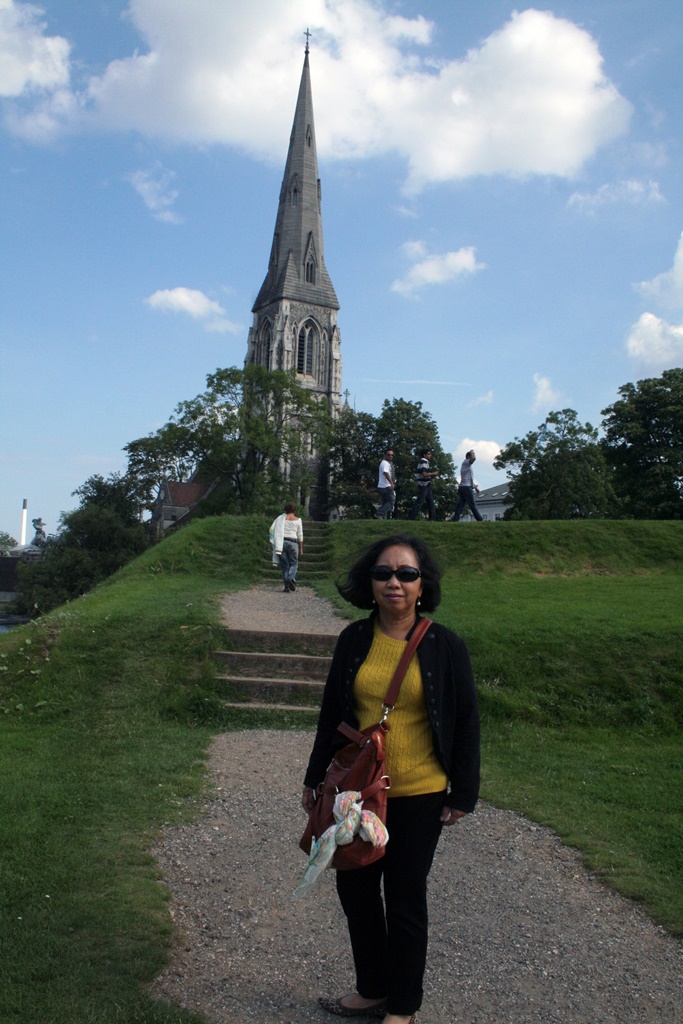
Nella and St. Alban's Church
Near the church is a fountain which is the largest monument in Copenhagen, the Gefion Fountain. The fountain
depicts the Norse goddess Gefjun, driving a plow with four large oxen. According to the story, Gefjun has been
promised as much territory in Sweden as she can plow in one night, so she turns her four sons into oxen and sets
to work. She and the oxen plow a great hole, throwing the extra dirt into the sea. The hole becomes a large
Swedish lake, and the discarded dirt becomes the island of Zealand, home to Copenhagen and the Gefion Fountain. The
fountain was created by a Danish sculptor named Anders Bundgaard, who completed it in 1908. It was donated to the
city by the Carlsberg Foundation.
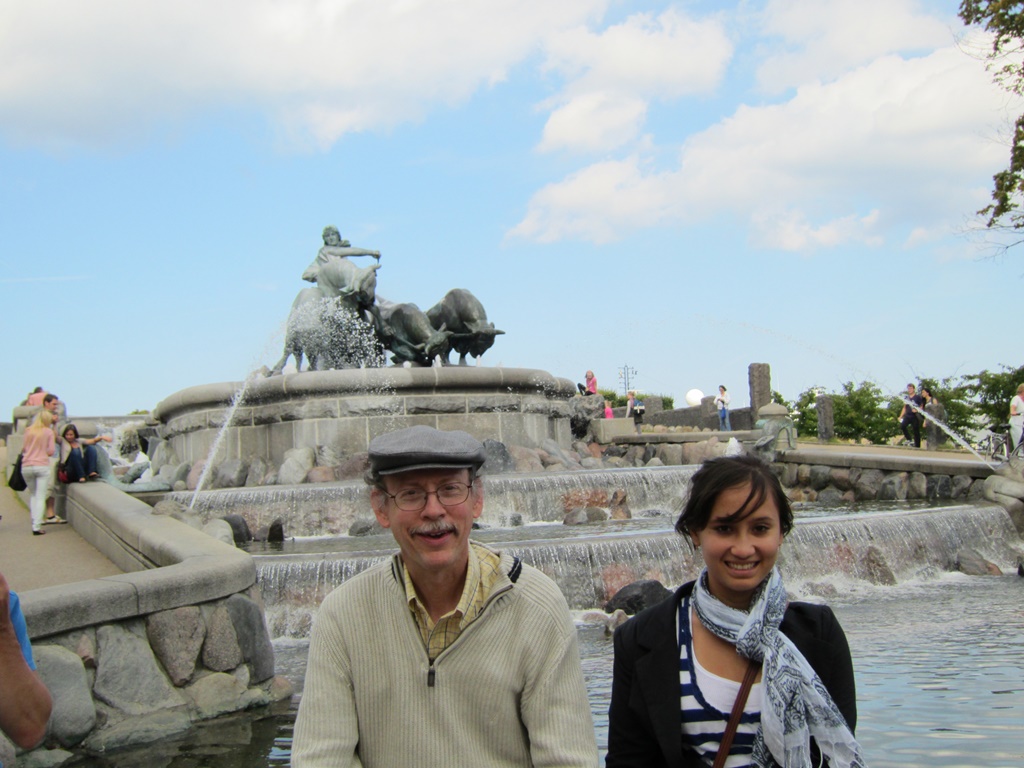
Bob and Connie with Gefion Fountain
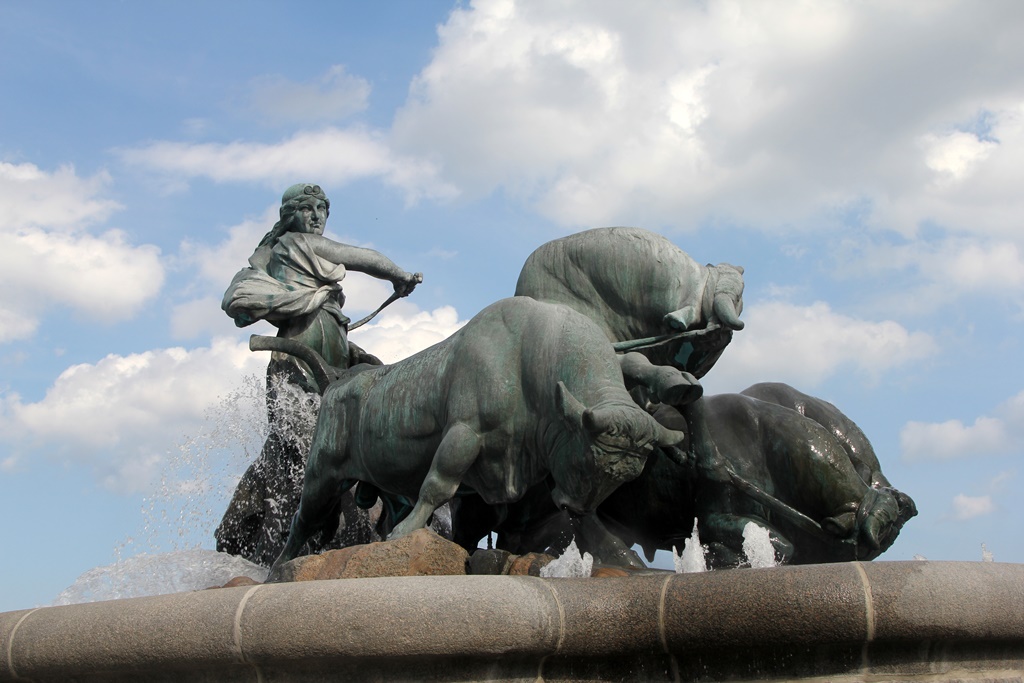
Gefjun and Oxen
Continuing northward through the park, we passed the Ivar Huitfeldt Column, a monument to Admiral Ivar Huitfeldt,
who died in 1710. It seems Admiral Huitfeldt was involved in a sea battle against the Swedes, when his ship caught
fire. Rather than abandoning ship, he continued the fight until the flames reached the ship’s powder magazine,
causing the ship to be blown to bits, along with the Admiral and his 497 crewmen. The ship’s anchor and some of its
guns were later recovered, and have been incorporated into the monument, which was built in 1886 following a
competition sponsored by Carl Jacobsen of the Carlsberg brewery. The competition was won by an architect named
Vilhelm Dahlerup.
Connie and Bob and Ivar Huitfeldt Column
Finally we reached the object of our search, the Little Mermaid statue. The statue was completed in 1913 by the
sculptor Edvard Eriksen, when it was unveiled atop its rock. The statue was commissioned by Carl Jacobsen (would
there be any art in Copenhagen without this guy?).
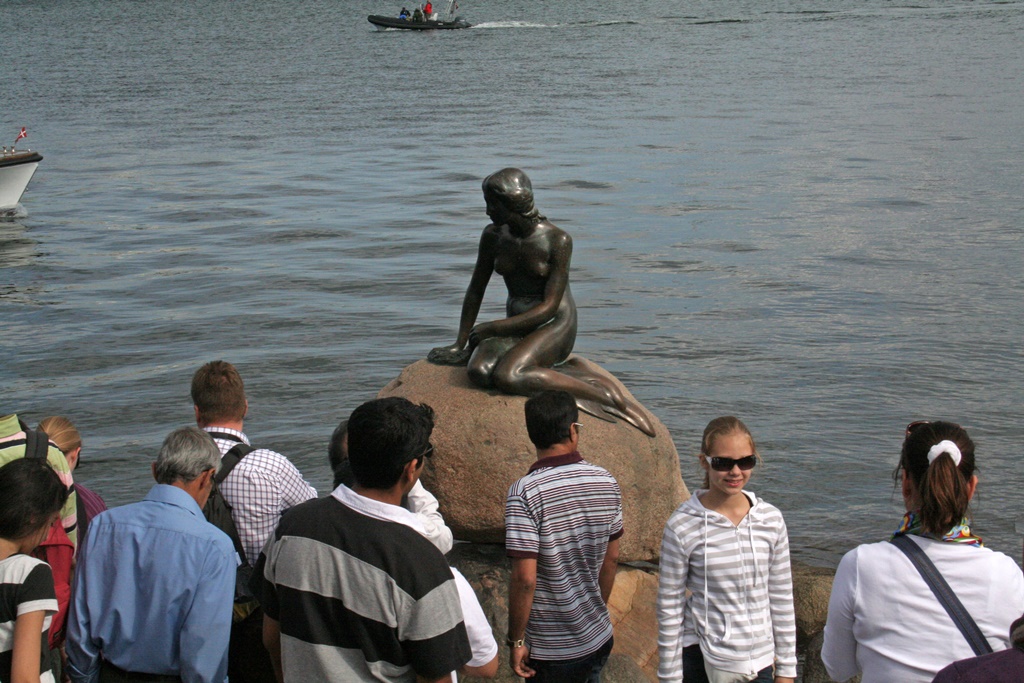
Little Mermaid and Tourists
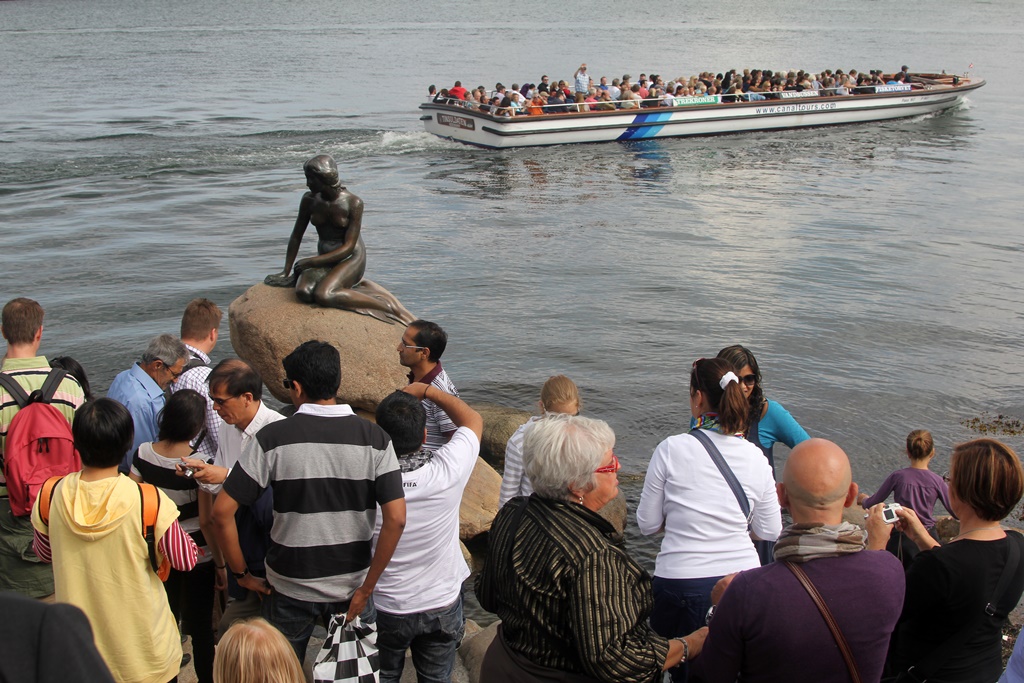
Little Mermaid and Tourist Boat
At just over four feet tall it’s a fairly unassuming statue which depicts the mermaid gazing longingly leftward,
presumably toward human activity or creations, or possibly toward her Prince. One would think the friendly
Danish people would sympathize with her plight and treat the statue with affection and respect. But one would
be wrong. Over the decades the statue has been painted several times, covered in a burqa, dismembered, decapitated
(twice, plus an additional partially successful attempt) and blasted from its base with explosives. But considering
all she’s been through, she doesn’t look half bad. And lest you fear for her well-being, it’s been revealed that
the statue in the harbor is not the original bronze – the original is apparently kept in an undisclosed location by
the heirs of the sculptor.
Mermaid, Nella and Connie
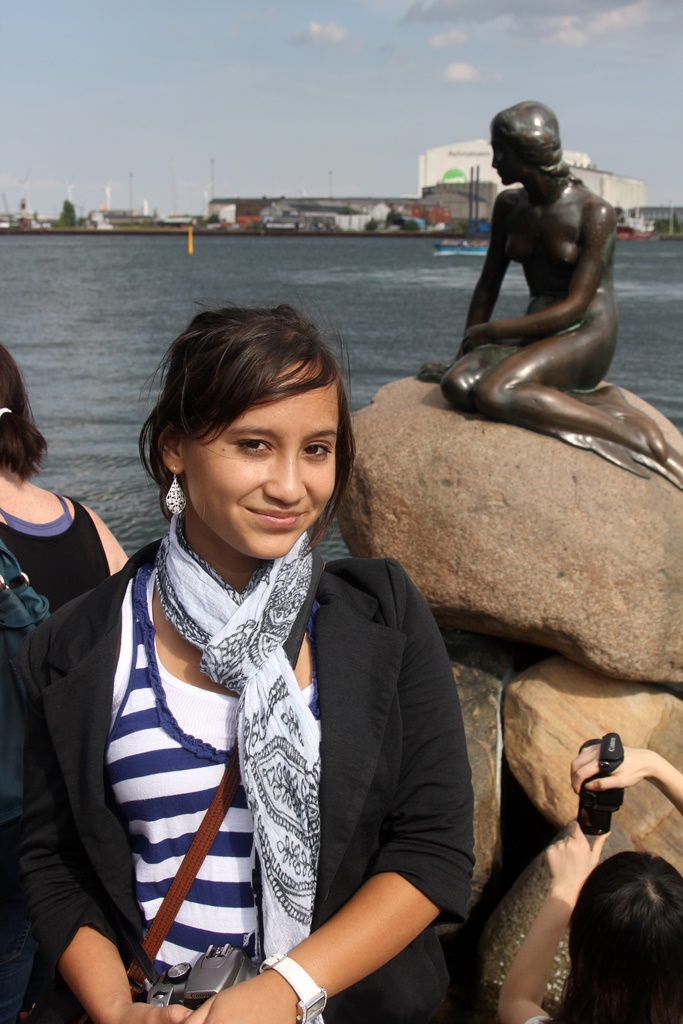
Connie and Mermaid
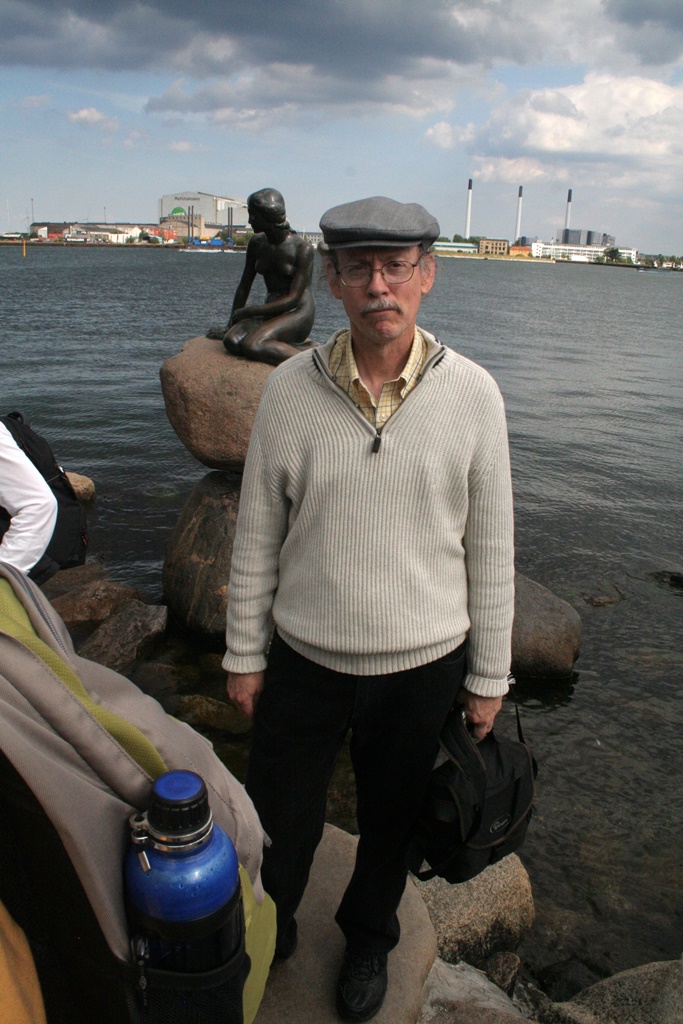
Bob and Mermaid
From the mermaid we went looking for a bus we could take back to the hotel, as we were more than ready to take a
break. We continued around the Kastellet and eventually found a main thoroughfare, where we located a bus stop
after a short search. The map given us at the hotel desk had bus routes on it, so we were able to figure out
how to get back to the Savoy.
Jesus Sacred Heart Church from Hotel
We rested at the hotel for a couple of hours and found some dinner, and then decided to explore a little
bit. We set out toward a long, well-known shopping street called the Strøget (somehow pronounced "stroyuh"),
passing through a large square adjacent to the city hall.
The Palace Hotel, Next to City Hall
The square was filled with people who were mostly looking at a small stage on which someone was standing and
saying something in Danish. It took us a minute, but we figured out there was some sort of gay pride thing
going on.
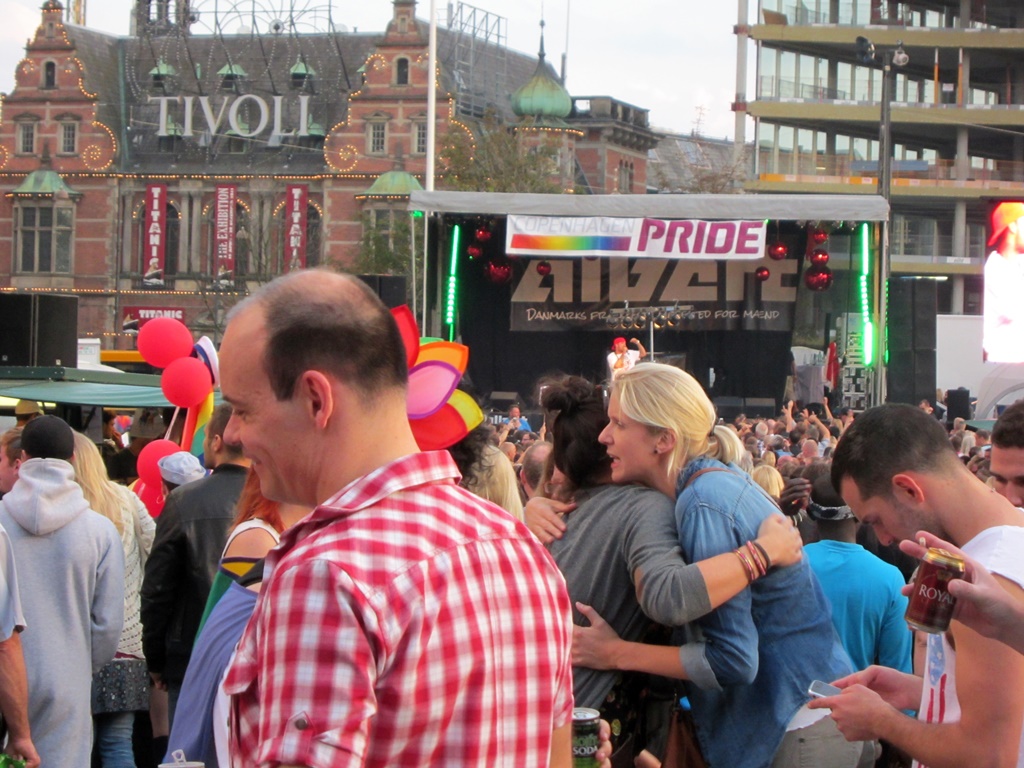
Stage and Attendees
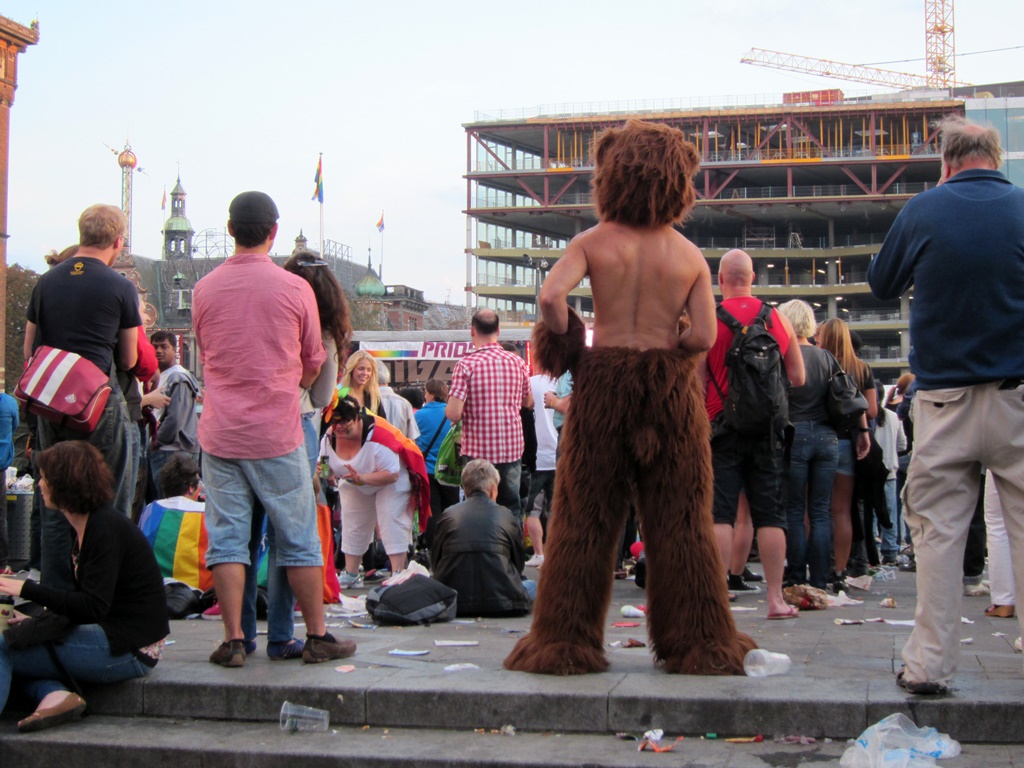
Party Time
With neither the Danish thing nor the gay thing quite computing, we continued on to the Strøget, which
began at the far side of the square.
The Strøget
The Strøget is billed as the longest pedestrianized shopping street in Europe. We walked the full distance,
but didn’t buy anything. For one thing, everything we saw was pretty expensive, and for another, many of the
stores were already closed for the day. We did find more of those elephants though.
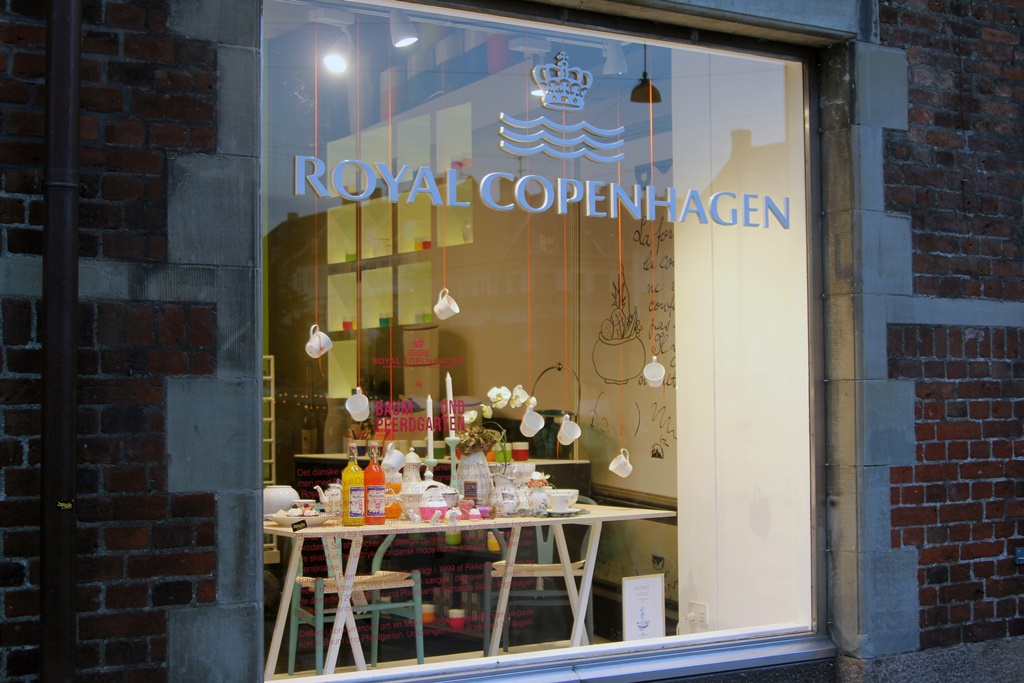
Royal Copenhagen Store
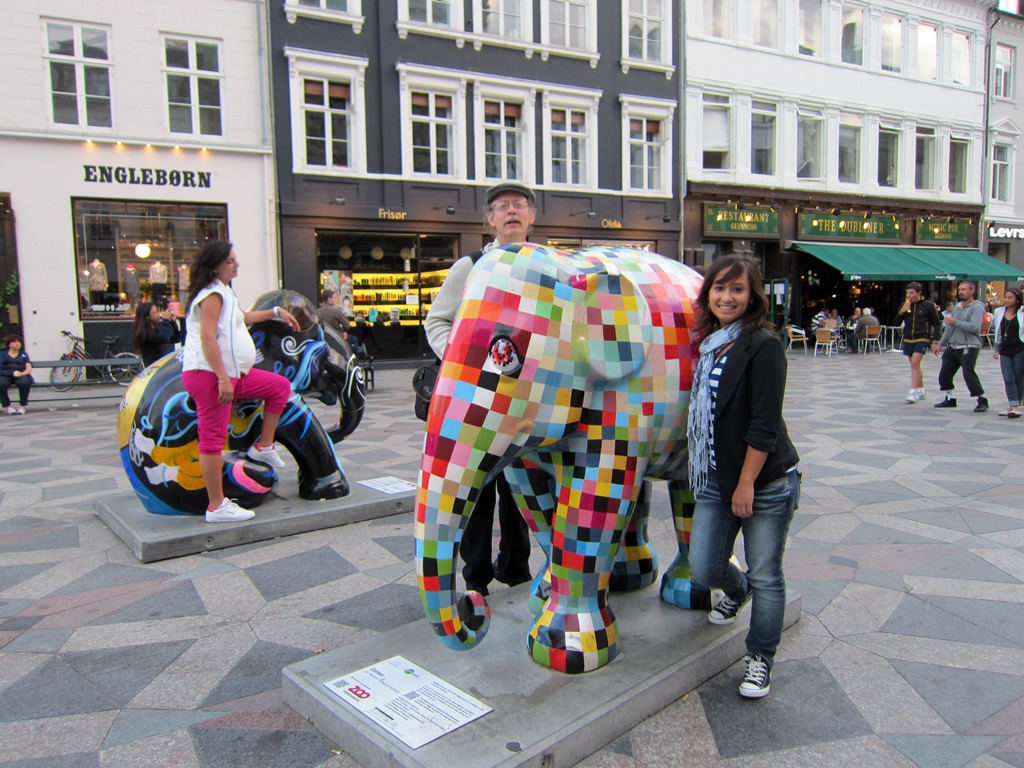
Bob and Connie and "Censor" Elephant
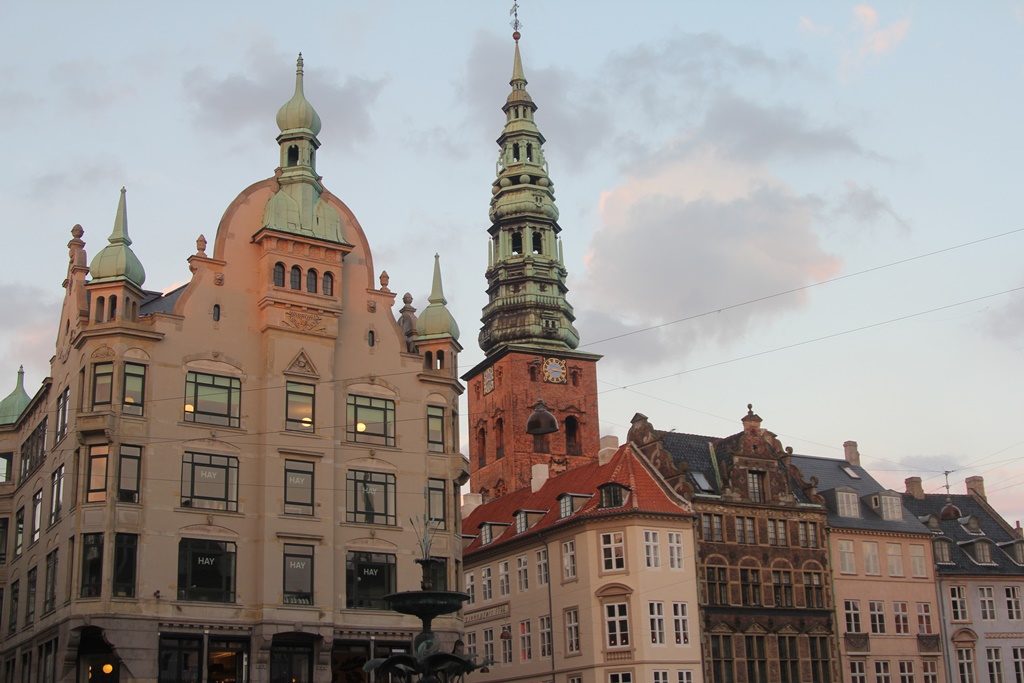
Høibrohus and Nikolaj Church Tower
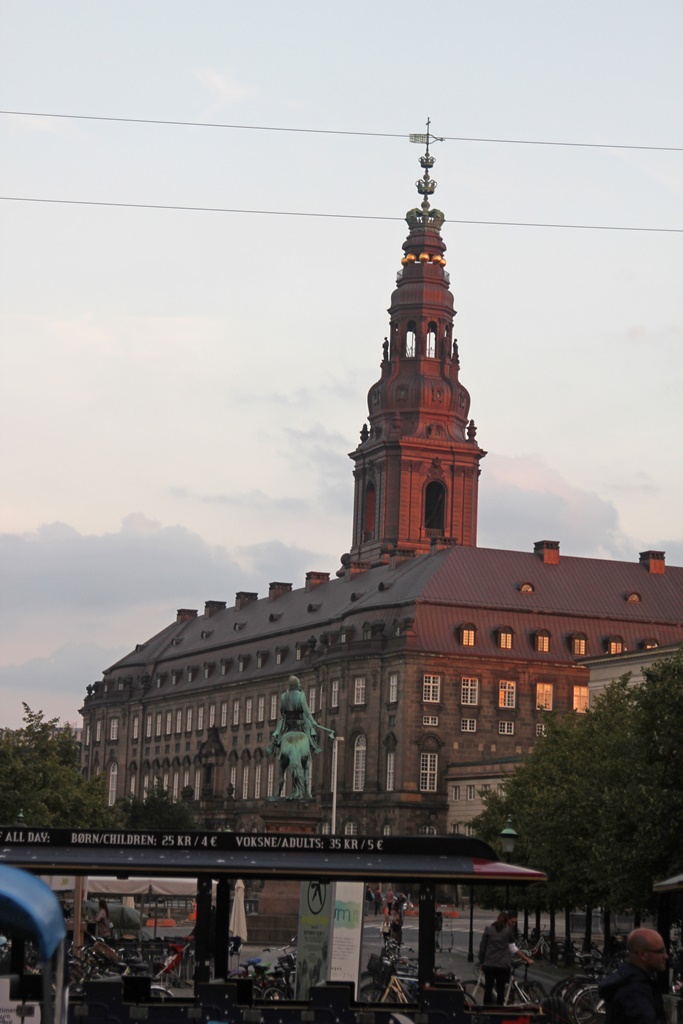
Strøget's End: Christiansborg Palace
On our arrival at the far end of the Strøget, we didn’t much feel like walking back, so we found a bus stop and
let our Copenhagen Cards take us back to the hotel. Then we rested up for the following day, when we were
planning an excursion to the National Art Museum.

